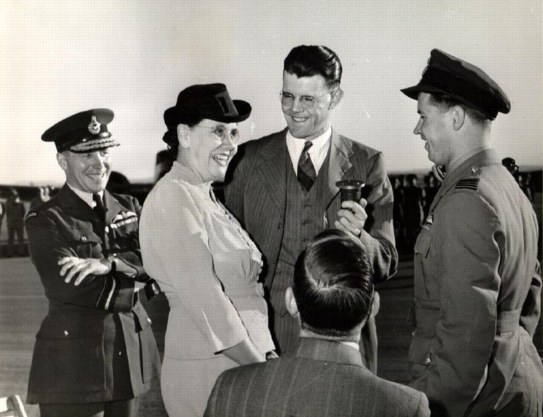 Aircrew Chronicles
Aircrew Chronicles  |
Aircrew Losses
|
Nose Art
|
BCATP
|
Lancaster
|
Media
|
Aircrew Losses
|
Nose Art
|
BCATP
|
Lancaster
|
Media
 Aircrew Chronicles
Aircrew Chronicles  |
Aircrew Losses
|
Nose Art
|
BCATP
|
Lancaster
|
Media
|
Aircrew Losses
|
Nose Art
|
BCATP
|
Lancaster
|
Media
Bomber Command Aircrew Chronicles
Dambusters Raid
Harlo Taerum's father immigrated from Norway and established a farm near Milo, Alberta, 70 km northeast of Nanton. Tragically, he drowned when Harlo was ten years old. Despite playing a major role on the family farm and in the raising of his two younger brothers and sister, he excelled at school, the newspaper reporting that he, "obtained the highest number of passes during a single term since the school's inception."
|
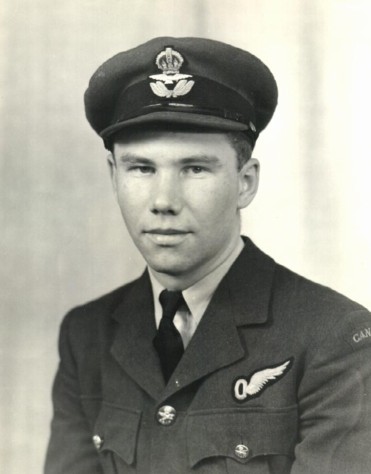
|
|
Harlo's father often spoke to him about his beautiful homeland. His mother recalled that, "When Norway was invaded by the Germans and reports began to filter through of the manner in which his father's people were being treated, Harlo enlisted in the RCAF." He commencing training at No. 1 Air Observers Training School at Malton, Ontario in February, 1941. Taerum went on to train at No. 1 Bombing and Gunnery School at Jarvis, Ontario, and completed the Advanced Air Navigation course at Rivers, Manitoba. Like many young aircrew, he was honoured to have his wing presented by Air Marshal Billy Bishop VC. Taerum crossed the Atlantic as the navigator of a Lockheed Hudson. Capt. H.C. Moody was the pilot and the non-stop flight was completed in a record-breaking time of 10 hours and 44 minutes from Gander, Newfoundland to Prestwick, Scotland. He began operations with No. 50 Squadron flying Hampdens on January 2, 1942. He gained wartime experience rapidly, his logbook recording being, "caught in searchlights," "severely hit by flak," and on March 25th, "crashing at Rose Vedne." Assigned to the squadron's conversion unit, Taerum spent time as a navigation instructor and continued to fly operations but now in Lancasters, the last two to Berlin with F/Lt "Mick" Martin. |
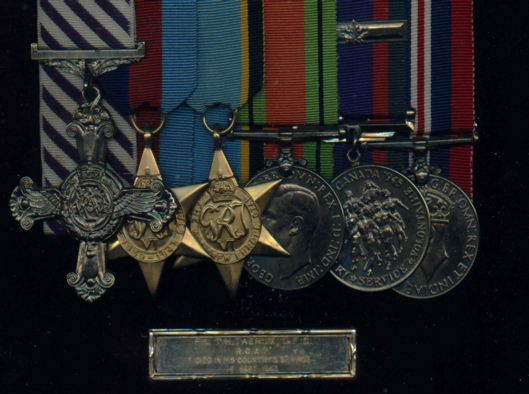
Mick Martin was an Australian and said to have been a magnificent pilot. He had gained a reputation for his skill at low flying at night. It was likely because of these skills that he was chosen by Guy Gibson and it is thought that Mick Martin, in turn, may have recommended Taerum to Gibson. To have been hand-picked to be W/C Guy Gibson's navigator is likely the greatest compliment that could have been paid to a Bomber Command navigator. |
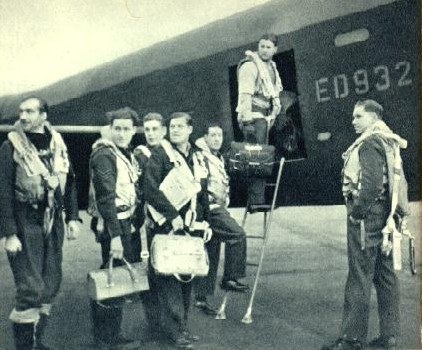 Leaving for the Dams P/O Taerum (right). |
At dusk on May 16th, Taerum recorded the take off at 9:40. The winds were stronger than anticipated as the Lancasters roared over the North Sea at the lowest possible altitude and Taerum found himself off the planned route when the coast was reached. Gibson wrote, "We pulled up high to about 300 feet to have a look and find out where we were, then scrammed down on the deck again as Terry said, 'O.K. -there's the windmill and those wireless masts. We must have drifted to starboard. Steer new course -095 degrees magnetic, and be careful of a little town that is coming up straight ahead.'" The navigation now was partly in the hands of the bomb-aimer who was using a special roller to identify features such as railway lines and canals and to avoid high-tension lines.
When all was ready Gibson manoeuvred into position to attack. Taerum's duty as the aircraft approached the dam was to make sure the aircraft was at the required sixty feet and he took his position at the perspex blister on the starboard side of the cockpit. As they approached the dam he switched on the spotlights at 00:25 and began giving directions to Gibson, "Down-down-down," and then after the lights converged on the water, "Steady-steady".
Taerum was presented with the DFC by the Queen at Buckingham Palace. In letters to his mother he wrote of the attention he was receiving: "One morning they woke me up and told me that I had been awarded the DFC. Later I had the ribbon sewn on my tunic. Can you imagine me strutting around town with it afterwards; We were just about mobbed for autographs; We were ordered back to our stations to meet the King and Queen. I was really lucky because I was introduced to both of them. The Queen is most charming and gracious. It was really quite a day."
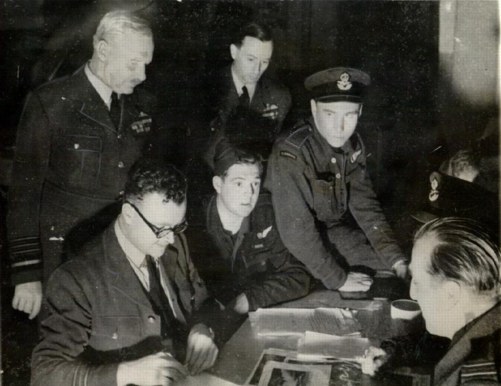
Following these days of glory, Terry and the other members of the squadron returned to operations. Sadly, on Sept. 17, 1943, Terry and three other members of Gibson's Dambusters crew were killed when their Lancaster was shot down at low level while attacking the Dortmun-Ems Canal.
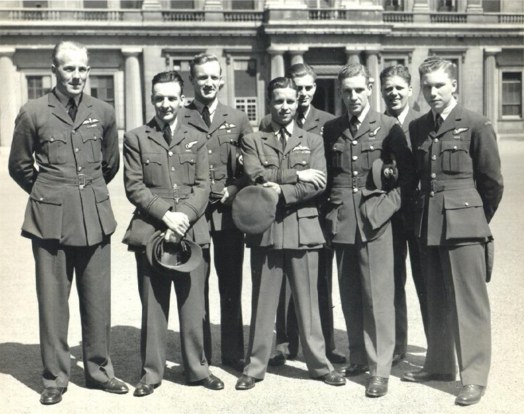
In September, 1943, Guy Gibson travelled with Winston Churchill to Quebec City on a highly publicized visit to North America. Gibson travelled across Canada visiting BCATP facilities, "so the men in the camps may be inspired to follow his example." His visit to Calgary was front-page news. He was welcomed by Mayor Andrew Davison and there were march-pasts, a parade, and newspaper and radio interviews.
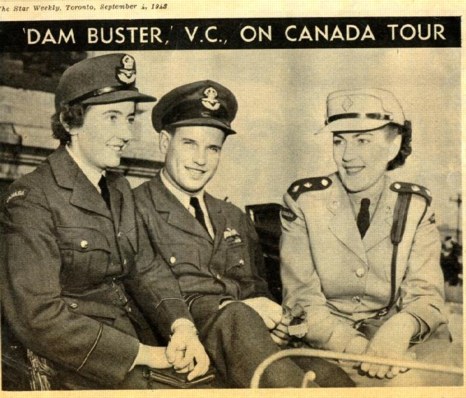
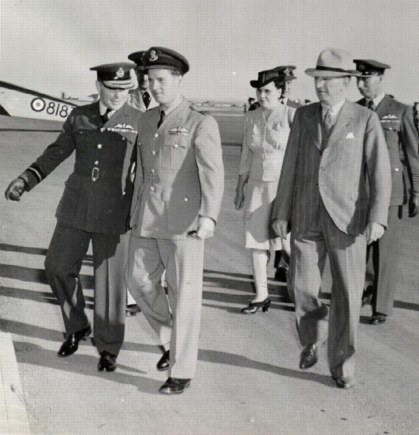
Upon being introduced to Mrs. Taerum, Gibson said, "Terry is a great boy and a great navigator. He got the whole squadron to the dam." Hilda Taerum said that meeting Guy Gibson was, "one of the proudest and happiest times of her life." Four days after Gibson's visit, Hilda Taerum learned that her son had been killed. A year later Terry's 18 year old brother was killed on his sixth operation when his Lancaster was shot down over Holland.
